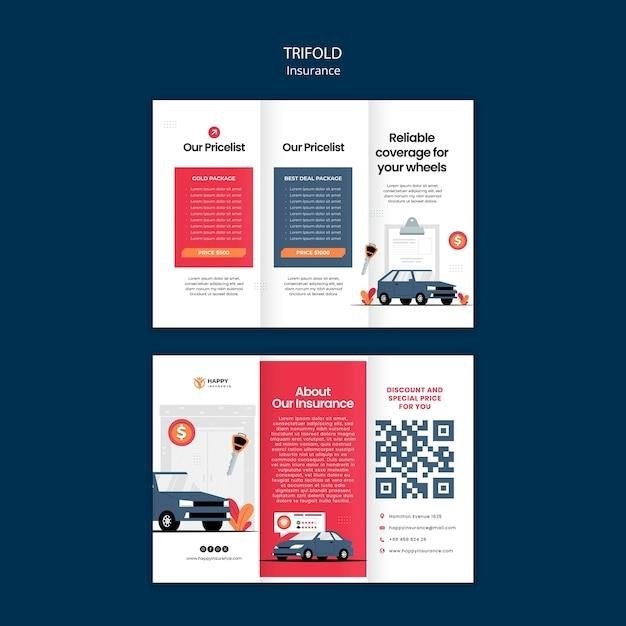
Piping and Instrumentation Diagram Symbols
Piping and Instrumentation Diagrams (P&IDs) are essential for process industries, providing a visual representation of the process system, including piping, vessels, valves, and instrumentation. These diagrams utilize standardized symbols to communicate information about the process flow, control systems, and equipment layout. The use of symbols simplifies the complexity of the process, allowing engineers and technicians to understand the system’s functionality and components.
Introduction
Piping and Instrumentation Diagrams (P&IDs) are essential documents in the design, construction, and operation of process plants. These diagrams serve as a blueprint, providing a comprehensive visual representation of the process system’s layout, equipment, piping, instrumentation, and control systems. P&IDs are crucial for ensuring the safe and efficient operation of the plant, facilitating communication among engineers, technicians, and operators. P&IDs are used in various industries, including oil and gas, chemical processing, pharmaceuticals, and power generation, where complex processes and intricate equipment networks require clear and standardized documentation. Understanding P&ID symbols is critical for interpreting these diagrams, as they convey vital information about the system’s functionality and components.
Importance of Piping and Instrumentation Diagrams (P&IDs)
Piping and Instrumentation Diagrams (P&IDs) play a crucial role in various industries, ensuring the safe, efficient, and reliable operation of process plants. Their importance stems from their ability to⁚
- Facilitate Communication⁚ P&IDs serve as a universal language for engineers, technicians, and operators, providing a clear and concise visual representation of the process system. This eliminates ambiguity and ensures everyone involved understands the system’s design and operation.
- Guide Construction and Installation⁚ P&IDs serve as a blueprint for the construction and installation of the process plant, ensuring that equipment, piping, and instrumentation are installed correctly and according to specifications.
- Support Maintenance and Troubleshooting⁚ P&IDs provide a detailed map of the process system, allowing maintenance personnel to quickly identify equipment, locate valves, and understand the flow of materials. This facilitates efficient troubleshooting and repair of equipment malfunctions.
- Enhance Safety⁚ P&IDs clearly depict the location and function of safety devices, such as relief valves and emergency shutdown systems, ensuring that personnel can respond effectively to hazardous situations.
In essence, P&IDs are indispensable for the successful planning, construction, operation, and maintenance of complex process systems.
Standard Symbols in P&IDs
P&IDs rely on a standardized set of symbols to represent various components and equipment within a process system. These symbols are essential for ensuring clarity, consistency, and universal understanding across different industries and engineering teams. The most common types of symbols used in P&IDs include⁚
- Piping Symbols⁚ These symbols represent the various pipes, fittings, and valves used in the process system, such as straight pipes, elbows, tees, reducers, and control valves.
- Instrument Symbols⁚ These symbols represent instruments used to measure and control process variables, such as pressure gauges, temperature transmitters, flow meters, and level switches. Each instrument symbol typically includes a letter designation, such as ‘P’ for pressure, ‘T’ for temperature, ‘F’ for flow, and ‘L’ for level.
- Valve Symbols⁚ These symbols represent various types of valves used to control the flow of fluids, such as gate valves, globe valves, ball valves, and butterfly valves. Each valve symbol includes a specific shape and may include additional details such as the type of actuator, if any.
These standard symbols are crucial for conveying information about the process system efficiently and accurately. They provide a common language for engineers and technicians, ensuring that everyone involved understands the system’s components and their interconnections.
Piping Symbols
Piping symbols are essential components of P&IDs, conveying information about the flow path of fluids within a process system; These symbols represent various types of pipes, fittings, and valves, providing a visual representation of the piping network. Common piping symbols include⁚
- Straight Pipes⁚ Represented by a solid line, indicating a straight section of pipe.
- Elbows⁚ Illustrated as a curved line, representing a change in direction of the pipe.
- Tees⁚ Depicted as a ‘T’ shape, indicating a point where the pipe branches into two directions.
- Reducers⁚ Shown as a narrowing line, indicating a reduction in pipe diameter.
- Control Valves⁚ Represented by a circle with a line through it, indicating a valve that regulates fluid flow.
The use of standardized piping symbols ensures clarity and consistency in P&IDs, making it easier for engineers and technicians to understand the piping network and its associated components.
Instrument Symbols
Instrument symbols are crucial for representing the sensors, transmitters, and controllers used in a process system. These symbols provide information about the type of measurement, control, or signal involved. Common instrument symbols include⁚
- Pressure Gauge⁚ Depicted as a circle with a ‘P’ inside, indicating a device that measures pressure.
- Temperature Transmitter⁚ Illustrated as a circle with a ‘T’ inside, representing a device that transmits temperature readings.
- Flow Meter⁚ Shown as a circle with an ‘F’ inside, indicating a device that measures fluid flow rate.
- Level Switch⁚ Represented as a circle with an ‘L’ inside, signifying a device that detects fluid level.
- Control Valve⁚ Depicted as a circle with a line through it, indicating a valve that regulates fluid flow based on a control signal.
The use of standardized instrument symbols ensures that the function and location of each instrument are clearly communicated in P&IDs, facilitating proper system operation and maintenance.
Valve Symbols
Valve symbols are fundamental in P&IDs, representing the various types of valves used to control fluid flow in a process system. These symbols provide information about the valve’s function, type, and operating mechanism. Common valve symbols include⁚
- Gate Valve⁚ Depicted as a circle with a vertical line through it, indicating a valve that opens and closes by lifting a gate across the flow path.
- Globe Valve⁚ Illustrated as a circle with a diagonal line through it, representing a valve that opens and closes by rotating a plug with a hole through it.
- Ball Valve⁚ Shown as a circle with a circle inside it, indicating a valve that opens and closes by rotating a ball with a hole through it.
- Butterfly Valve⁚ Represented as a circle with a semicircle inside it, signifying a valve that opens and closes by rotating a disc that partially blocks the flow path.
- Check Valve⁚ Depicted as a circle with an arrow pointing through it, indicating a valve that allows flow in one direction but prevents flow in the opposite direction.
The use of standardized valve symbols ensures that the type and function of each valve are clearly communicated in P&IDs, facilitating proper system operation and maintenance.
P&ID Symbol Libraries
P&ID symbol libraries are invaluable resources for engineers and designers, providing a comprehensive collection of standardized symbols for use in creating accurate and consistent piping and instrumentation diagrams. These libraries typically include a wide range of symbols, encompassing piping components, instrumentation, valves, pumps, and other process equipment. They often offer different symbol styles, such as ANSI, ISO, or proprietary standards, allowing users to select the appropriate symbols for their project’s requirements.
P&ID symbol libraries are often available in various formats, including⁚
- Software-based libraries⁚ Integrated into CAD software packages like AutoCAD, Microstation, or specialized P&ID software, providing easy access to symbols within the design environment.
- Standalone libraries⁚ Accessible as downloadable files or online resources, allowing users to import the symbols into their preferred design tools.
- Printed guides⁚ Offering a physical reference for quick access to symbols, although they may not be as comprehensive as software-based libraries.
These libraries simplify the process of creating P&IDs, ensuring consistency and accuracy in symbol usage, which is crucial for clear communication and efficient design.
Software for Creating P&IDs
Specialized software applications designed for creating P&IDs have revolutionized the process, providing engineers with powerful tools for efficient and accurate design. These software solutions streamline the creation of P&IDs by offering features such as intelligent symbol libraries, automated routing and labeling, and integrated data management. They typically include a vast collection of pre-defined symbols, allowing users to easily select and insert the appropriate components into their diagrams.
Some popular P&ID software options include⁚
- Autodesk AutoCAD P&ID⁚ A comprehensive solution that integrates with AutoCAD, offering tools for creating detailed P&IDs and managing associated data.
- AVEVA Engineering⁚ A comprehensive suite of engineering software that includes modules for P&ID creation, simulation, and analysis.
- Bentley Systems⁚ Provides a range of software solutions for P&ID creation, including tools for 3D modeling, simulation, and data management.
- Intergraph SmartPlant P&ID⁚ A specialized solution for P&ID creation that integrates with other SmartPlant modules for a comprehensive engineering workflow.
These software applications empower engineers to create professional-quality P&IDs that comply with industry standards, promoting efficient communication and collaboration throughout the design process.
Applications of P&IDs
Piping and Instrumentation Diagrams (P&IDs) play a crucial role in various industries, serving as the blueprint for process systems and equipment. Their applications extend across diverse sectors, ensuring safe, efficient, and reliable operations. Here are some key industries where P&IDs are widely used⁚
- Process Industries⁚ P&IDs are essential in chemical processing, pharmaceuticals, food and beverage, and other process-oriented industries. They provide a detailed representation of the process flow, control systems, and equipment, enabling engineers to design, operate, and maintain complex processes effectively.
- Oil and Gas Industry⁚ P&IDs are crucial for designing and operating oil and gas production facilities, refineries, and pipelines. They depict the flow of hydrocarbons, control systems for production, and safety equipment, ensuring safe and efficient extraction, processing, and transportation of energy resources.
- Pharmaceutical Industry⁚ P&IDs play a vital role in pharmaceutical manufacturing, where precision and adherence to strict regulations are paramount. They provide a visual representation of the production process, control systems, and equipment, ensuring the quality and safety of pharmaceuticals.
P&IDs are fundamental for understanding, designing, and managing complex process systems, contributing significantly to the safety, efficiency, and reliability of operations across various industries.
Process Industries
P&IDs are indispensable in process industries, serving as the foundational documentation for designing, constructing, and operating complex process systems. They provide a comprehensive visual representation of the process flow, control systems, and equipment, enabling engineers to understand the intricate workings of the plant and manage operations effectively. The use of standardized symbols ensures clarity and consistency, facilitating communication among engineers, technicians, and operators.
P&IDs are particularly critical in chemical processing, pharmaceuticals, food and beverage, and other process-oriented industries, where complex reactions, mixing, and separation processes are involved. They depict the flow of materials, the control systems for temperature, pressure, and other process variables, and the safety equipment, ensuring the safe and efficient operation of the plant.
The use of P&IDs in process industries is essential for ensuring the quality, safety, and efficiency of operations, contributing significantly to the success of these industries.
Oil and Gas Industry
In the oil and gas industry, Piping and Instrumentation Diagrams (P&IDs) play a critical role in ensuring the safe and efficient operation of complex oil and gas production, processing, and transportation systems. These diagrams provide a detailed visual representation of the intricate network of pipes, valves, pumps, compressors, and other equipment involved in extracting, refining, and transporting hydrocarbons.
P&IDs are essential for planning, designing, constructing, and maintaining oil and gas facilities, providing a clear roadmap for the flow of hydrocarbons, the control systems for pressure, temperature, and flow rates, and the safety systems for preventing accidents. They are also used for training operators and technicians, facilitating maintenance and troubleshooting, and ensuring compliance with industry standards and regulations.
The use of standardized symbols in P&IDs promotes clear communication and understanding among engineers, technicians, and operators, contributing significantly to the safety, efficiency, and profitability of oil and gas operations.
Pharmaceutical Industry
The pharmaceutical industry relies heavily on Piping and Instrumentation Diagrams (P&IDs) to ensure the safe and controlled production of life-saving medications. These diagrams are crucial for maintaining the highest standards of quality, purity, and sterility throughout the manufacturing process. P&IDs visually depict the flow of raw materials, intermediates, and finished products, along with the critical equipment and control systems that ensure consistent and compliant production.

In pharmaceutical manufacturing, P&IDs are used to design and build facilities, train operators, implement quality control measures, and comply with stringent regulatory requirements. They serve as a blueprint for the complex network of pipes, valves, pumps, reactors, filters, and other equipment involved in the production of pharmaceuticals.
The use of standardized symbols in P&IDs facilitates clear communication and understanding among engineers, technicians, and operators, ensuring that all parties involved in the manufacturing process are aware of the system’s functionality, critical parameters, and safety measures. This promotes a high level of quality control, ensuring the safety and effectiveness of the medications produced.
Resources for Learning P&ID Symbols
Learning P&ID symbols is essential for anyone involved in process engineering, design, or operation. There are a variety of resources available to aid in understanding and mastering these symbols, from online guides and tutorials to specialized software programs.
One valuable resource is the ISA (International Society of Automation) website, which provides comprehensive information on P&ID symbols and standards. The ISA website offers detailed explanations of various symbols, including those for piping, instrumentation, control valves, and other equipment.
Numerous online tutorials and courses are available, offering interactive learning experiences that can help users visualize and understand the symbols’ meanings and applications. These online resources often provide downloadable PDF guides, practice exercises, and quizzes to reinforce learning.
In addition to online resources, specialized software programs like EdrawMax and Lucidchart offer libraries of P&ID symbols that can be used for creating professional-quality diagrams. These software programs often include templates, guides, and tutorials to assist users in building their understanding of P&ID symbols and their applications.




